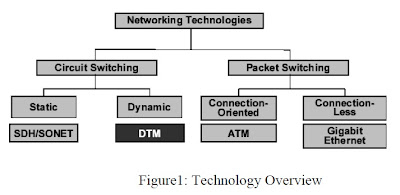In principle, two basic technologies are used for building highcapacity networks: circuit switching and packet switching. In circuitswitched networks, network resources are reserved all the way from sender to receiver before the start of the transfer, thereby creating a circuit. The resources are dedicated to the circuit during the whole transfer. Control signaling and payload data transfers are separated in circuit-switched networks. Processing of control information and control signaling such as routing is performed mainly at circuit setup and termination. Consequently, the transfer of payload data within the circuit does not contain any overhead in the form of headers or the like. Traditional voice telephone service is an example of circuit switching. Circuit-Switched Networks
An advantage of circuit-switched networks is that they allow for large amounts of data to be transferred with guaranteed transmission capacity, thus providing support for real-time traffic. A disadvantage of circuit switching, however, is that if connections are short-lived—when transferring short messages, for example—the setup delay may represent a large part of the total connection time, thus reducing the network's capacity. Moreover, reserved resources cannot be used by any other users even if the circuit is inactive, which may further reduce link utilization.
FULL SEMINAR TOPIC ON DTM DOWNLOAD HERE

0 comments: